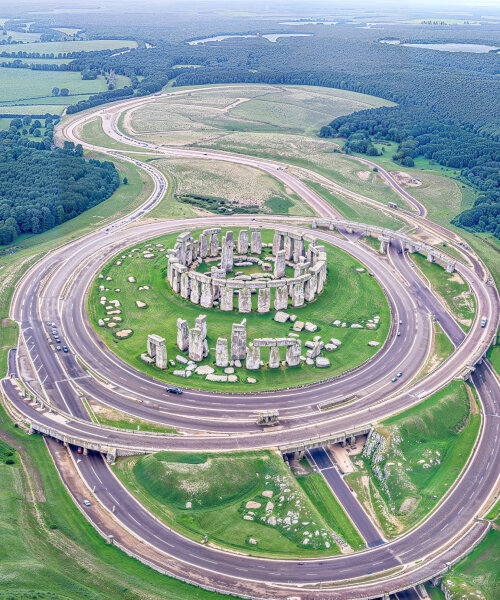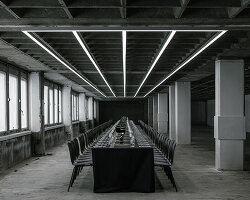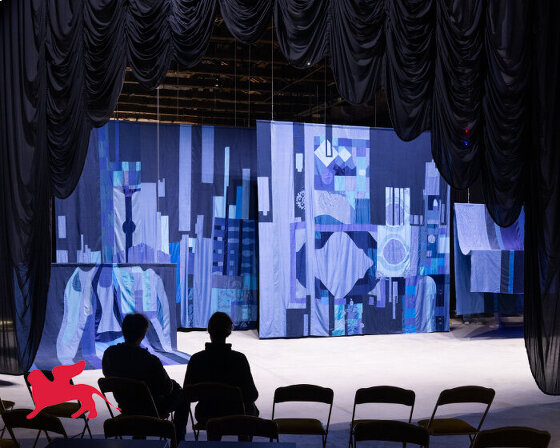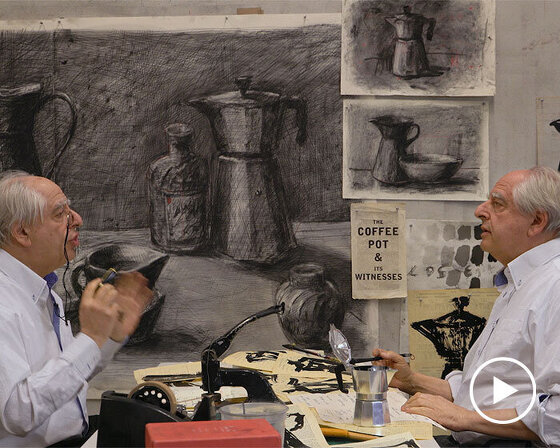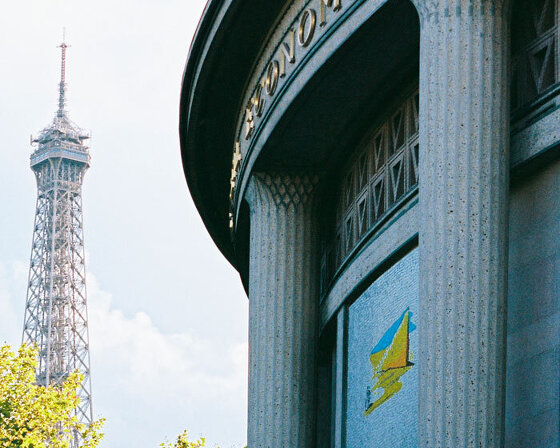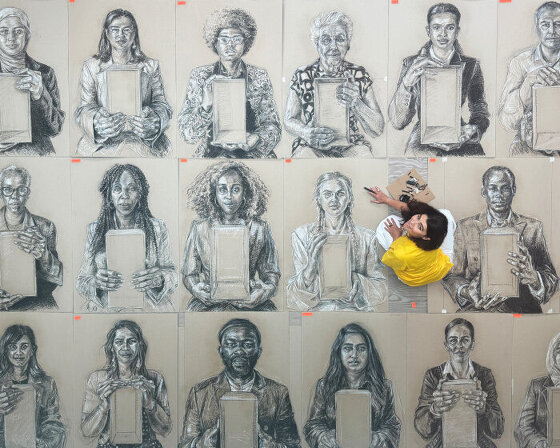Kyle Branchesi’s the motorist won takes over UK landmarks
In The Motorist Won, Kyle Branchesi illustrates private cars driving through expanded roads and stacked highways that were once historical landmarks and green areas in the UK. In an interview with designboom, Kyle Branchesi says, ‘the common practice of cars shamelessly invading bike lanes and using sidewalks and bike lanes as their private parking spaces, with near-zero consequence, highlights a deep-seated disregard for anyone not in a motor vehicle.’
Throughout the series, his statement paints a future where private vehicles take over historical landmarks and green spaces in the UK, a time when car owners may seek the government’s help to make way for their vehicles by trimming down trees and building more roads to first avoid traffic jams, then later on be congested again. It’s a cycle that Kyle Branchesi wants to underline, and the series The Motorist Won creates a compelling glimpse of the future where political and social interventions result in the loss of greenery and marred spaces of famous landmarks.
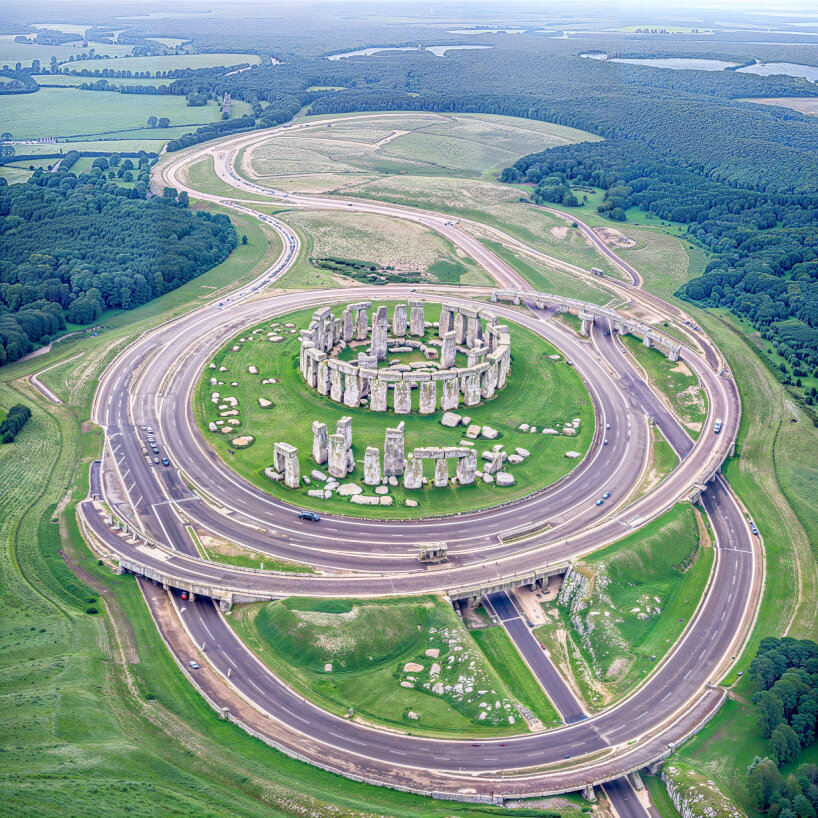
The Motorist Won by Kyle Branchesi (2023) | Stonehenge Option 1 | images courtesy of Kyle Branchesi
The Motorist Won is a part of Kyle Branchesi’s Scalefulness, a visual portfolio that depicts altered environments as a way to question their meaning to people and to bring attention to issues that are not often dug into. His visual work examines the extent of technology and artificial intelligence using Midjourney, and the world he creates can refer to the issues concerning the public, including his most recent work on The Motorist Won.
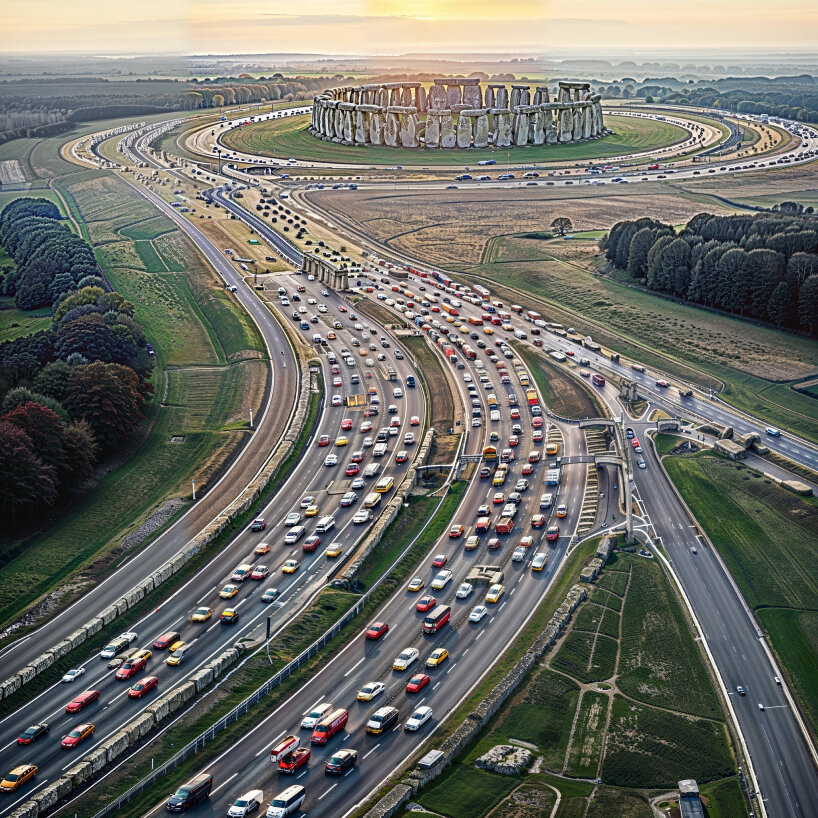
Stonehenge Option 2
In this series of expanded roads for private cars and landmarks becoming parking lots, Kyle Branchesi heeds the political climate in the UK about the growing and consistent use of cars and private vehicles over public transportation, and what they can do to the green spaces, including bike lanes and sidewalks, with the government backing them up. Speaking with designboom about The Motorist Won, Kyle Branchesi says, ‘these images showcase the dangerous absurdity of letting short-term populist appeasement to a vocal motorist minority prevail over data-driven urban planning strategies focused on public health, the environment, and long-term community well-being.’
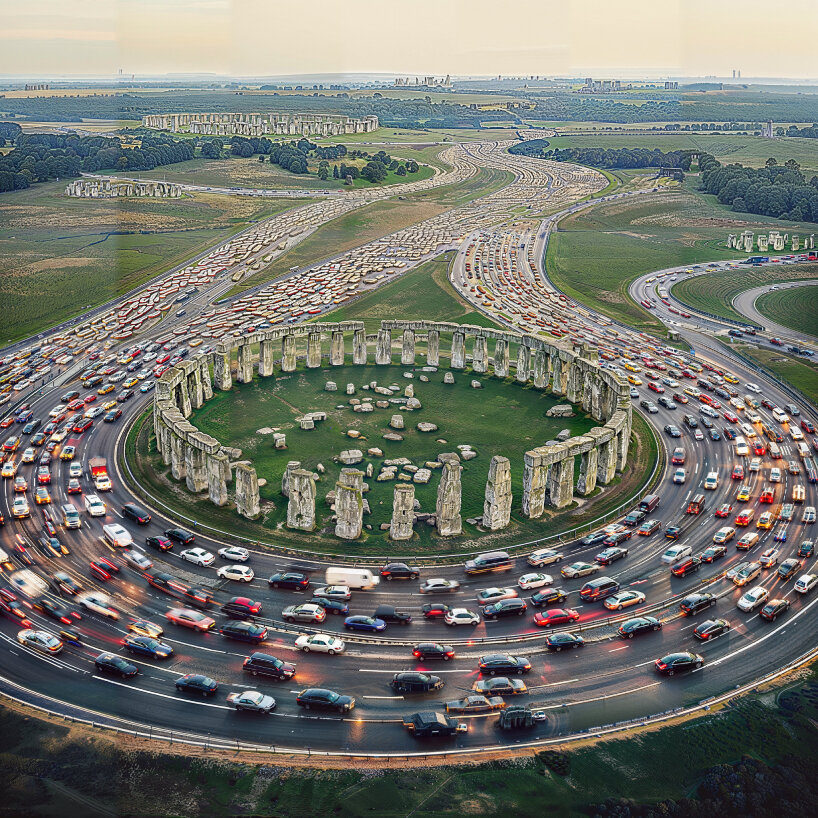
Stonehenge Option 3
41.2 million licensed vehicles in the UK as of june 2023
According to the statistics garnered by the UK government at the end of June 2023, there were 41.2 million licensed vehicles in the UK, a 1.3 percent increase from June 2022. Among these over 41 million licensed vehicles, 851,000 were licensed zero-emission vehicles, an increase of 57 percent compared to the end of June 2022 (this included 780,000 zero-emission cars, an increase of 58% on the previous year).
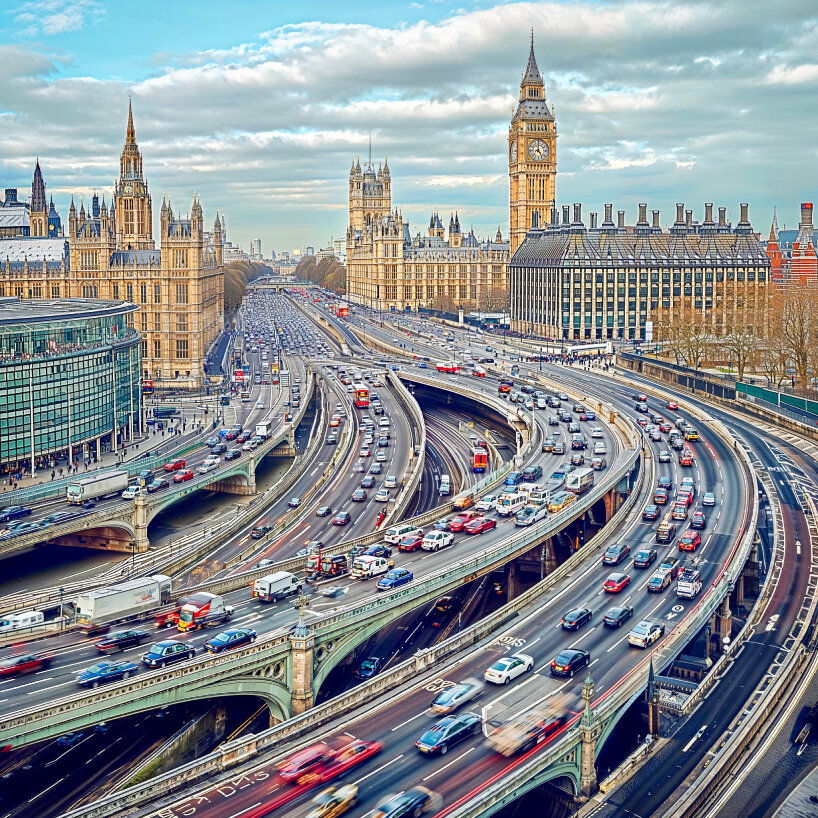
Palace of Westminster
The UK Government statistics state that the zero-emission vehicles accounted for 2.1 percent of all road-using vehicles, which was an increase of 0.2 percent on the previous year. In line with this, the Prime Minister commented that he would be putting a stop to the war on motorists by preventing councils from enforcing low-traffic neighborhoods (unless consented by the locals) and a 20mph speed limit, as Sky News reported.
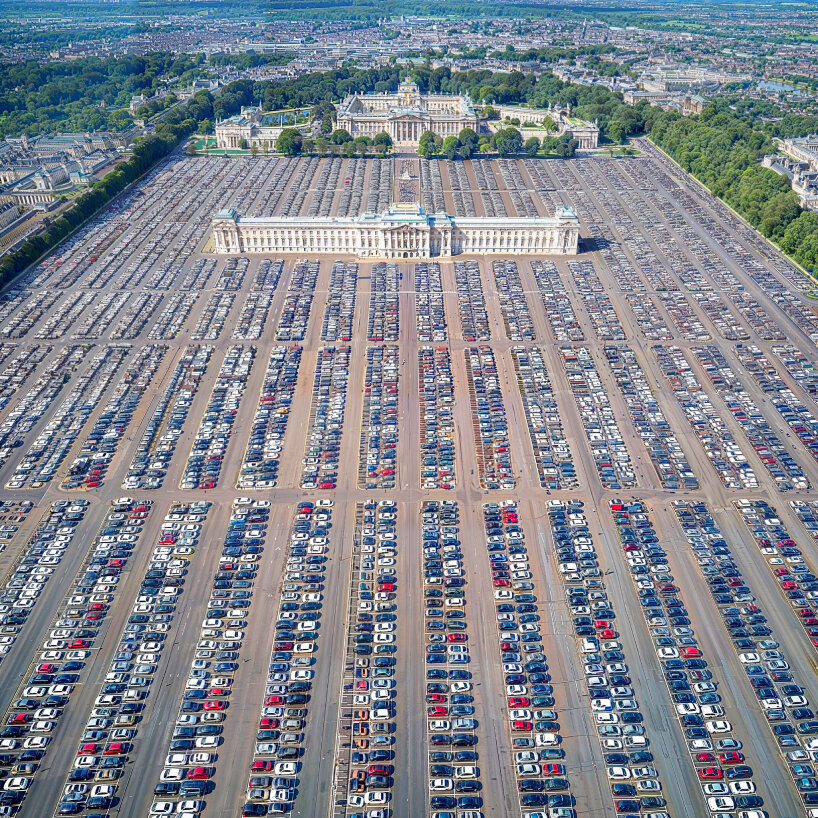
Buckingham Palace
The report above also mentioned that the Department for Transport planned to stop councils from implementing the 15-minute cities – or the idea that people should be able to go to hospitals, shops, and social and educational institutions on foot or by bike – since they may restrict people from using their cars and private vehicles. Kyle Branchesi’s The Motorist Won imagines a future where, without conscious and assertive restrictions on cars and private vehicles, they may take over landmarks and historical places and turn them into roads, highways, and parking lots to cater more to their vehicle needs. In a conversation with designboom, Kyle Branchesi delves more into The Motorist Won including the tools he used to realize the images.
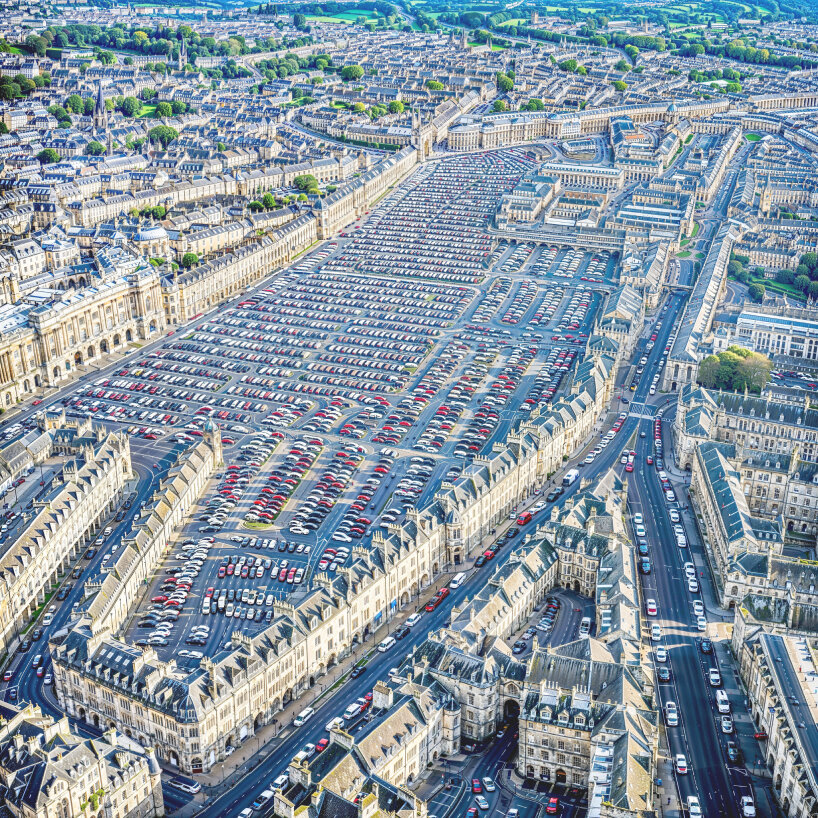
Bath City Center
Kyle Branchesi explores The Motorist Won
designboom (DB): What led you to create ‘The Motorist Won?’ Have you noticed urban developments around the UK that echo the images you generated?
Kyle Branchesi (KB): The political foundation of my series, ‘The Motorist Won?’, stems from the intensified ‘war on motorists’ rhetoric employed by the Conservative Party within the UK’s current climate. This discourse deliberately misrepresents initiatives aimed at creating more sustainable and livable cities as assaults on drivers’ freedoms. This has tangible consequences; prioritizing drivers leads to urban plans that discourage walking, cycling, and efficient public transport improvements.
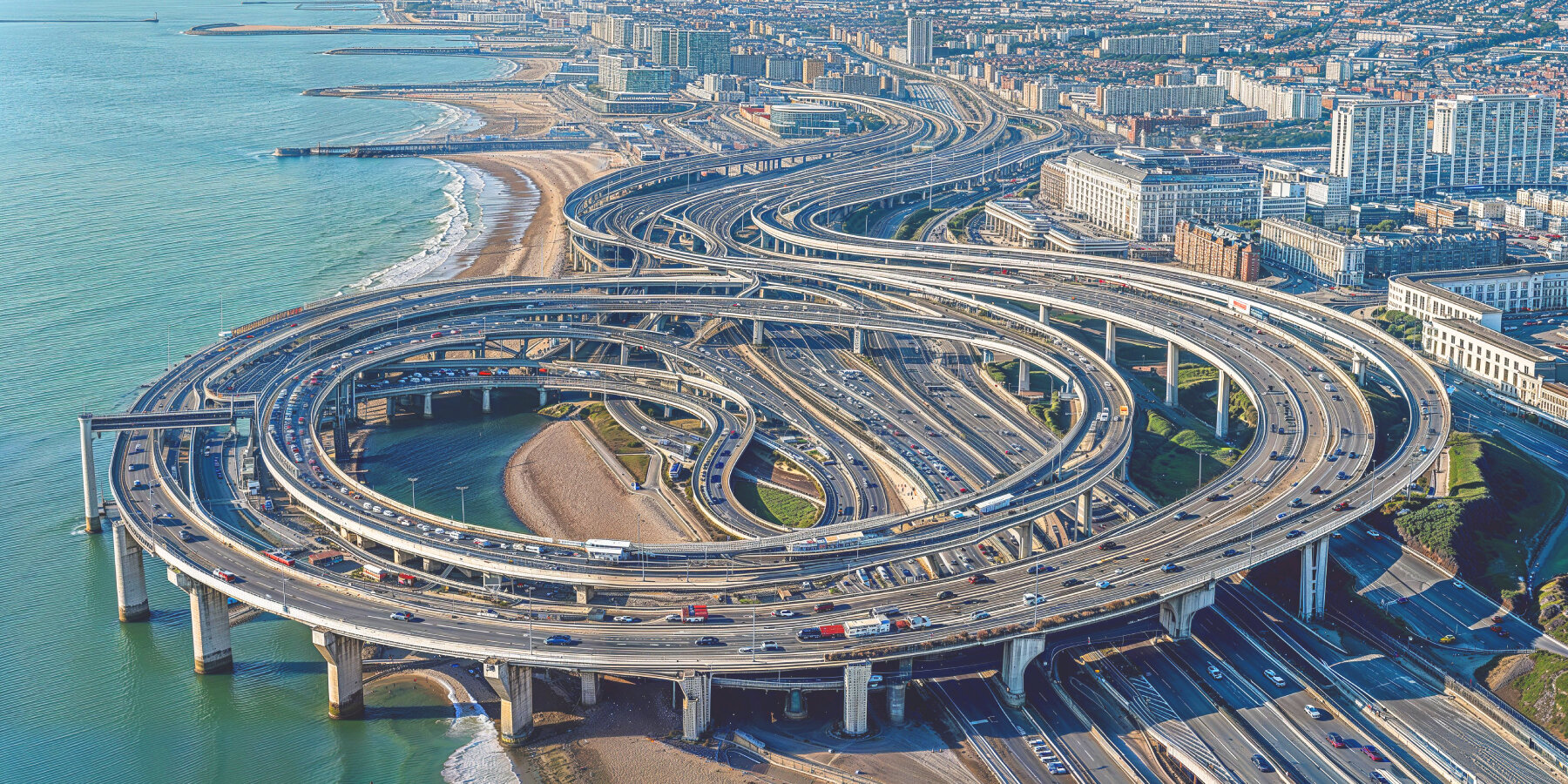
Brighton Beach
KB: As a resident of the UK, I’ve been shocked by the nation’s car dependency compared to many other developed nations. Outside London, public transport often falls short due to high costs, inconvenient routes, and a fragmented privatized bus system with rival companies leading to excessive ticket costs. Many UK cities surprisingly lack adequate pedestrian infrastructure – think too few crossings, inconvenient placement, and long delays at traffic signals stemming from an outdated ‘car first’ highway code. Every attempt to enhance the quality of life for pedestrians and cyclists sparks unreasonable hostility, revealing a deeply ingrained political prioritization of car-centric development.
It’s concerning that such a fundamental, evidence-backed change as prioritizing pedestrians in the highway code only occurred in 2022, and has yet to be put into practice by most residents. This political climate forms the core of my critique. These images showcase the dangerous absurdity of letting short-term populist appeasement to a vocal motorist minority prevail over data-driven urban planning strategies focused on public health, the environment, and long-term community well-being.
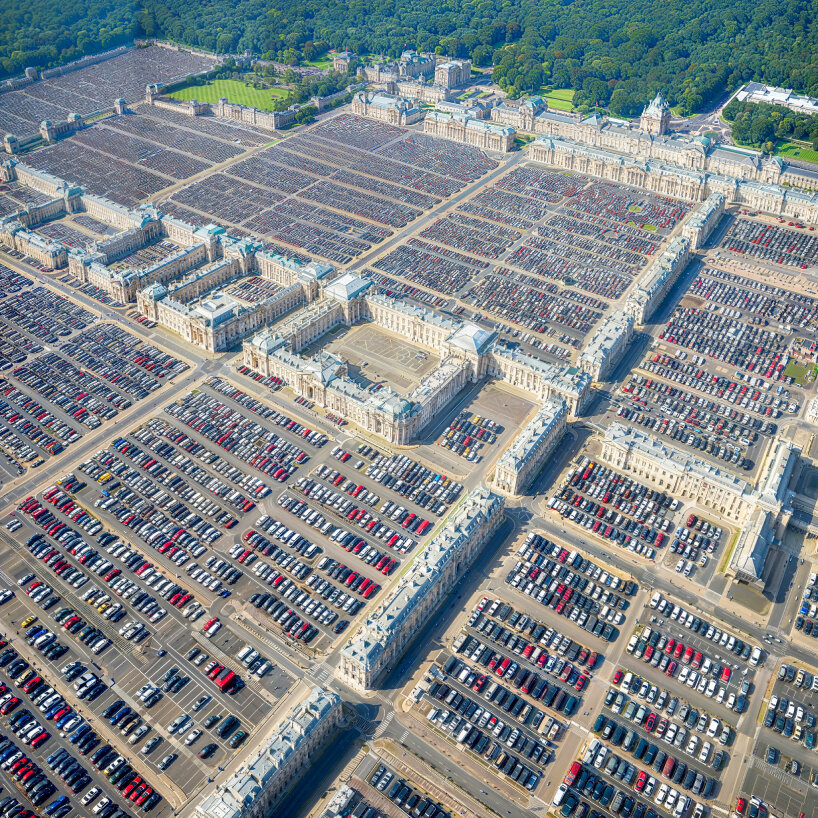
Whitehall
DB: What are the narratives that you wish The Motorist Won can put forward?
KB: My primary goal with this series is to spark much-needed dialogue. To be honest, it also stems from immense frustration. Initially, the project evolved organically, but it struck a nerve when I realized it reflected my daily observations as a Glasgow resident. The common practice of cars shamelessly invading bike lanes and using sidewalks and bike lanes as their private parking spaces — with near-zero consequence — highlights a deep-seated disregard for anyone not in a motor vehicle.
This isn’t what I expected of a nation seemingly committed to sustainability. While Europe holds an image of walkable cities, the UK often embraces the worst of American car-dependency and amplifies it with flaws like privatized transit outside of London, and pedestrian-hostile street layouts (even in London). My goal is not necessarily to provide any solutions but to force open a conversation. Why is this blatant disregard for alternative transport modes accepted?
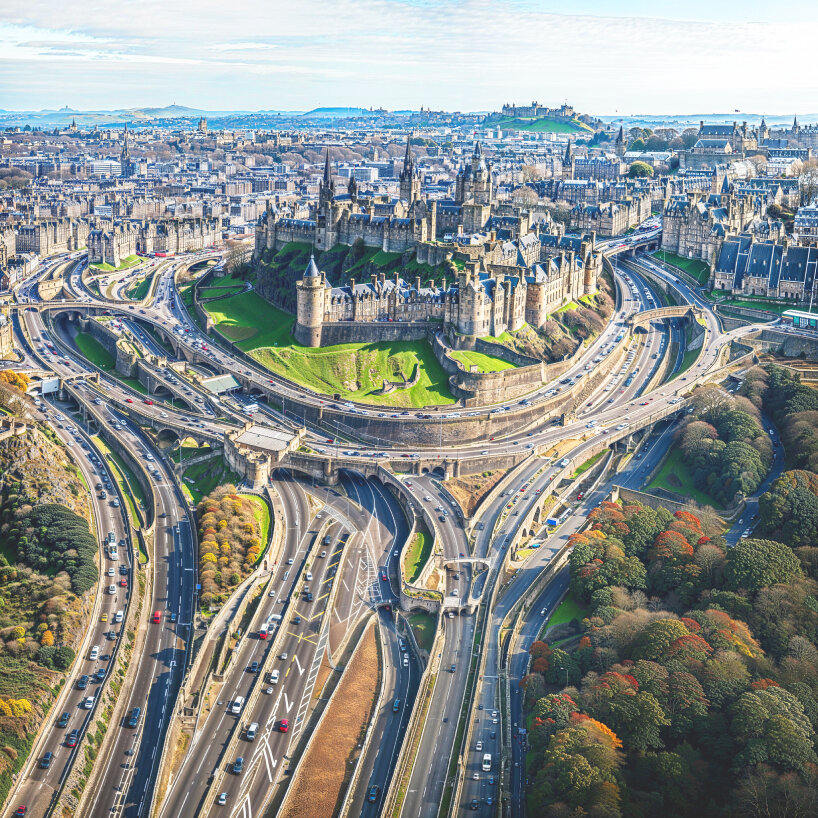
Edinburgh Castle
DB: Can you tell us about the design process of The Motorist Won?
KB: My images were created using a multi-step process. Initially, I used ChatGPT to refine descriptive prompts that became the basis for images generated by Midjourney, an AI image generator. This was followed by extensive work in Photoshop and Magnific AI for enhancement and upscaling. While I respect that many still lack a nuanced understanding of generative AI, I’d like to challenge the notion that it diminishes the artist’s intent or that it blindly pushes a button and creates masterpieces.
It’s essential to recognize the countless hours involved in crafting prompts, curating results, and meticulously training the AI to achieve a visually evocative product. In my case, this series took over three months, generating 30,000+ images alongside consistent uploading of reference material to guide the outcome. While I find the discussion about tools fascinating, the focus should be on the message carried by these images, not the tools used to create them.
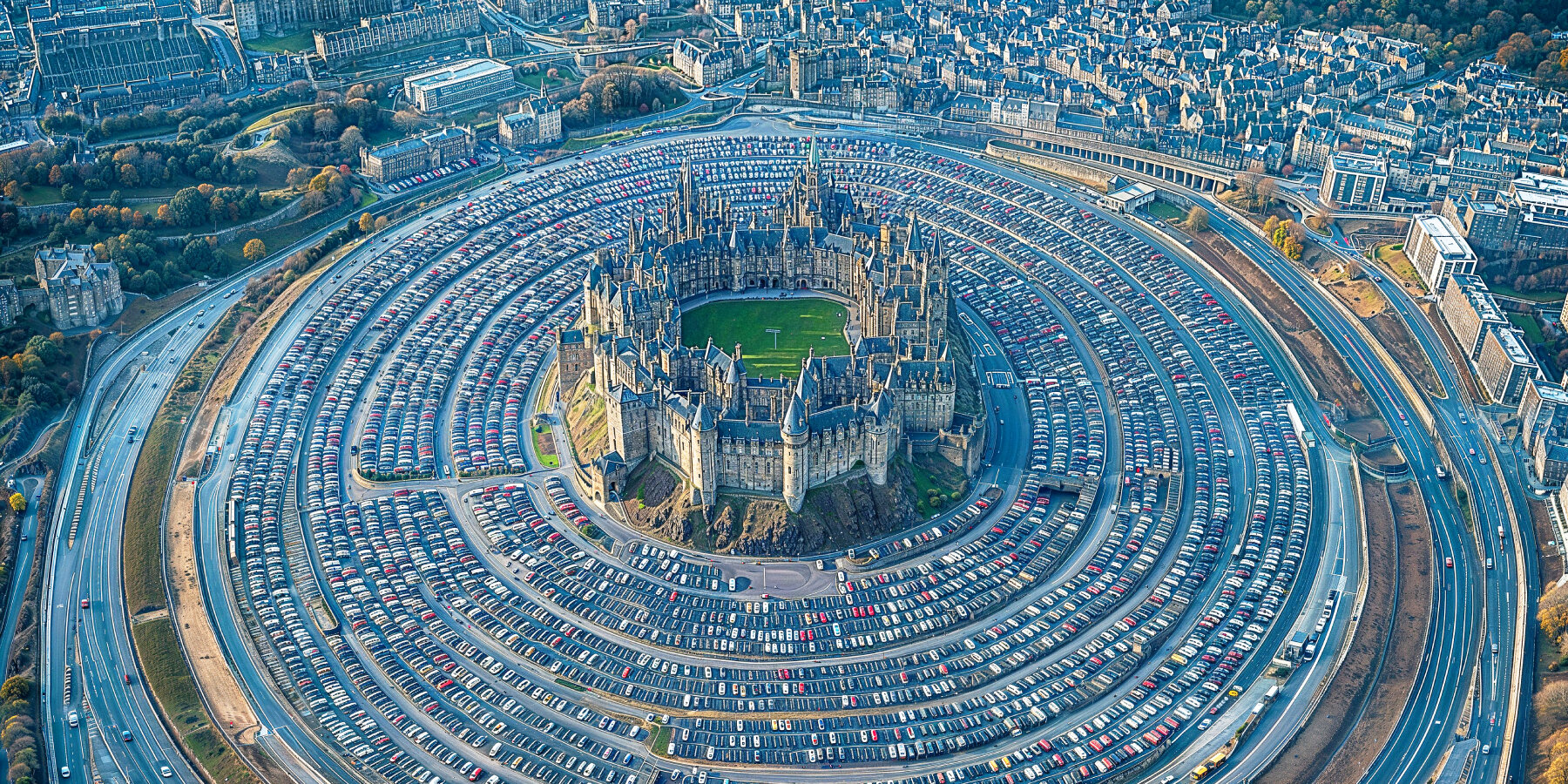
Stirling Castle
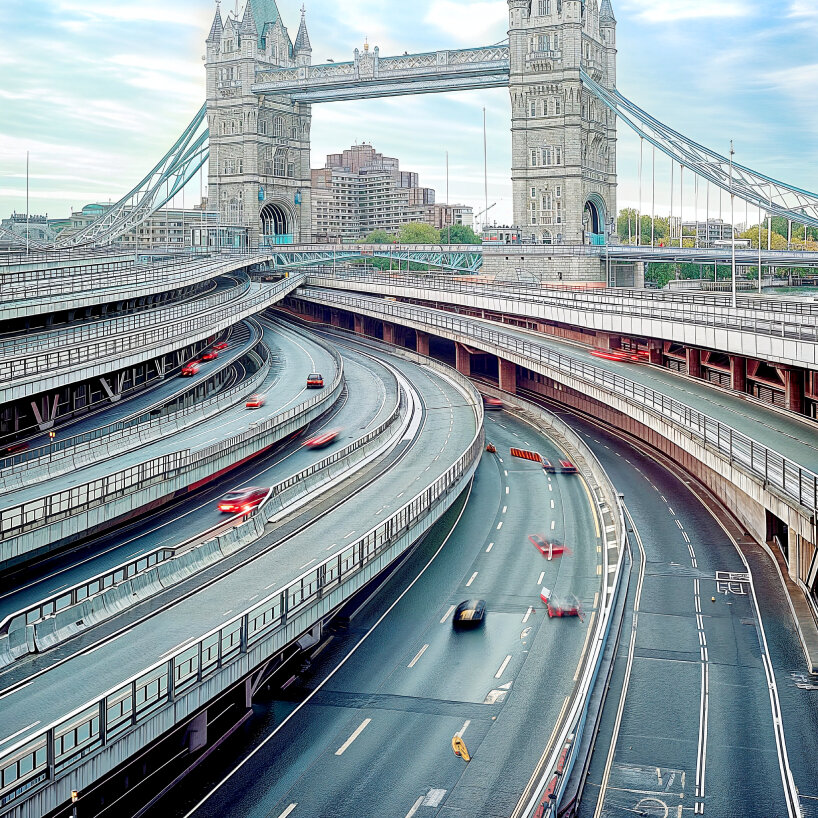
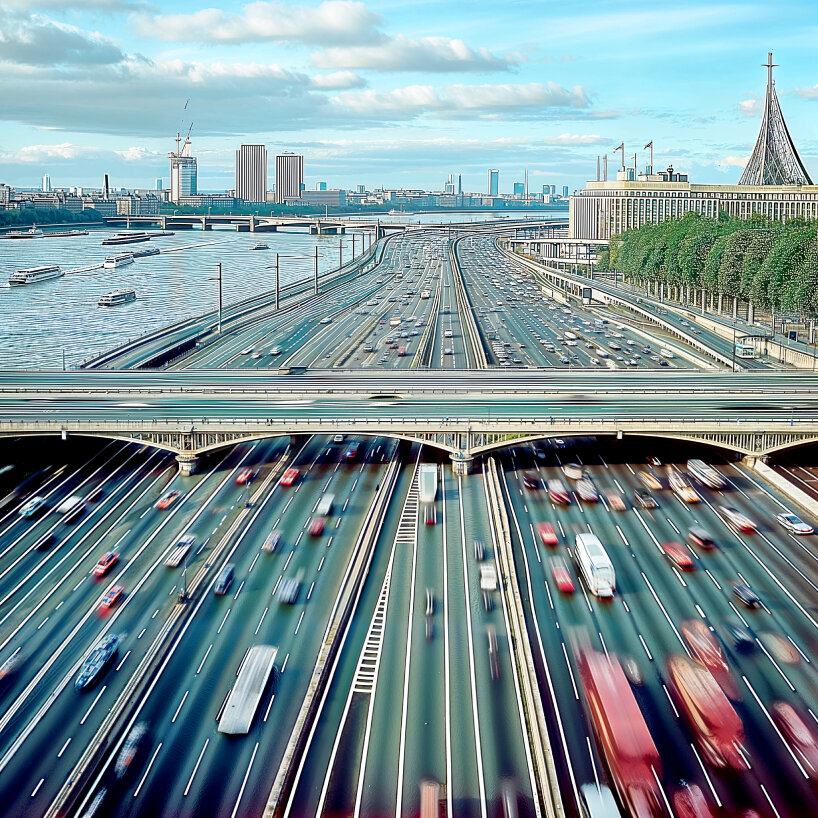
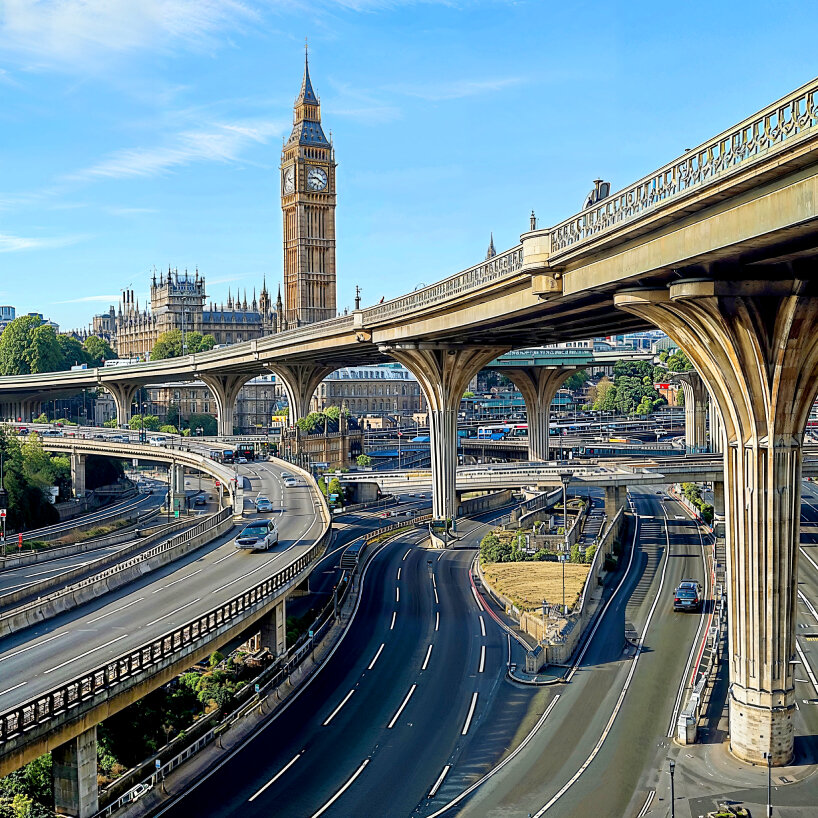
project info:
name: The Motorist Won
series: Scalefulness
design: Kyle Branchesi
art interviews (152)
digital art (139)
PRODUCT LIBRARY
a diverse digital database that acts as a valuable guide in gaining insight and information about a product directly from the manufacturer, and serves as a rich reference point in developing a project or scheme.
